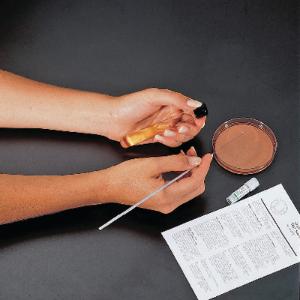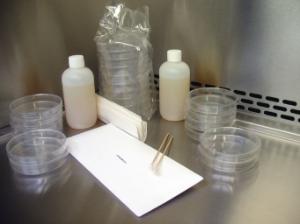"Germ Hunter" Louis Pasteur-Inspired Biology Activity
Middle and High School
Louis Pasteur has to be a hero to anyone who’s a fan of inquiry-based learning! If you looked up why and how in the dictionary, you’d see Pasteur’s picture. Ok, maybe not, but there’s no doubt that throughout his life, Pasteur carefully explored questions that troubled him. He examined questions from every angle. And for that, we owe the French chemist and founder of microbiological sciences a debt of gratitude.
Thanks to Pasteur's research on a process (pasteurization) to kill bacteria, we have tastier and safer food. Of course, his enormous contributions to germ theory revolutionized our understanding and treatment of diseases and illnesses. Pasteur's vaccines cured diseases like rabies, anthrax, cholera, TB, and smallpox.
How did Louis Pasteur contribute to the life sciences?
When Louis Pasteur was growing up in the 1830s, he had to witness the horrific effects of diseases like rabies and tuberculosis. Pasteur’s inquisitive mind set him on a lifelong search for answers to probing questions about diseases and conditions. Pasteur’s discoveries have saved millions of lives and are the foundation for future medical advancements. Here are a few examples of Pasteur’s world-changing research:
- Study of Optical Activity
Physicist Jean-Baptiste Biot was the first to observe optical activity. While investigating the ability of certain crystals or solutions to rotate plane-polarized light clockwise or counterclockwise (optical activity), Pasteur hypothesized that there was an asymmetric arrangement to these molecules that twisted the light. Pasteur was the first to show the existence of chiral molecules. It may help students to consider that chiral objects have a "handedness” and can’t be superposed on their mirror image, e.g., golf clubs, scissors, shoes, or a corkscrew. Pasteur’s hypothesis was fundamental to the study of structural chemistry—the study of molecules’ three-dimensional characteristics. A familiar application of this concept includes determining the concentration and purity measurements of food and drugs. - Pasteurization and Fermentation
How exciting to reach into the back of the refrigerator for that lonely hunk of cheddar cheese and sniff, sniff; it’s still good! Long live safe food! Pasteur helped revolutionized food safety, extending the shelf life of foods and drinks. Pasteur studied the origin of microorganisms and found that we can prevent perishable foods from spoiling by destroying the microbes already in the food and, once sterilized, protecting it from further contamination. He also determined the exact time and temperature to kill the harmful microorganisms in wine without changing its taste.
Never one to rest on his laurels, Pasteur also studied fermentation and demonstrated that it’s a metabolic process conducted by microscopic organisms. The fermentation process transforms and preserves food using common microorganisms such as bacteria, yeast, and mold. These microorganisms convert carbohydrates, such as starch or sugar, into acids, gases, or alcohol without oxygen. - Germ Theory
Through his experiments, Pasteur proved that food spoiled because of contamination by invisible bacteria, not because of spontaneous generation; that’s Germ theory 101! Pasteur also concluded that those bacteria caused infection and disease. Before Pasteur’s discovery, scientists believed that living matter (like bugs and diseases) came from non-living organisms (like dust or dirt); fortunately for us, Pasteur’s findings went viral! Germ theory revolutionized public health; Pasteur’s work inspired Dr. Joseph Lister’s development of antiseptic surgery.
Use this activity to help the inquiring minds in your classroom make jaw-dropping science discoveries of their own!
Activity: Bacteria In Food Demonstration!
Students determine contamination levels of ground beef in different environments.
- Analytic testing on samples of hamburger
- Ideal for reinforcing basic laboratory methods and the importance of sterile procedures
- Students learn about food safety
Thanks to researchers like Pasteur, we know the importance of carefully preparing and storing food to avoid bacterial contamination. Your students can study the effects of improperly stored food with this lab activity.
The serial dilutions students perform determine the bacterial titer (level of contamination) in frozen, refrigerated, and room-temperature beef.
Recommended Products
[StartProductBlock]

Ward's® Gram Stain Bacterial Suspension Kit
Students culture both Gram-positive and Gram-negative rods in preparation for staining. It comes with a freeze-dried mixed culture of Bacillus, culture materials, and instructions.
[EndProductBlock]
[StartProductBlock]

How Clean is your Lab Station? Microbiology Experiment Kit
How Clean is your Lab Station? Test for the presence of bacteria in your workspace before and after cleaning with this TSA Microbiology Experiment Kit.
[EndProductBlock]
